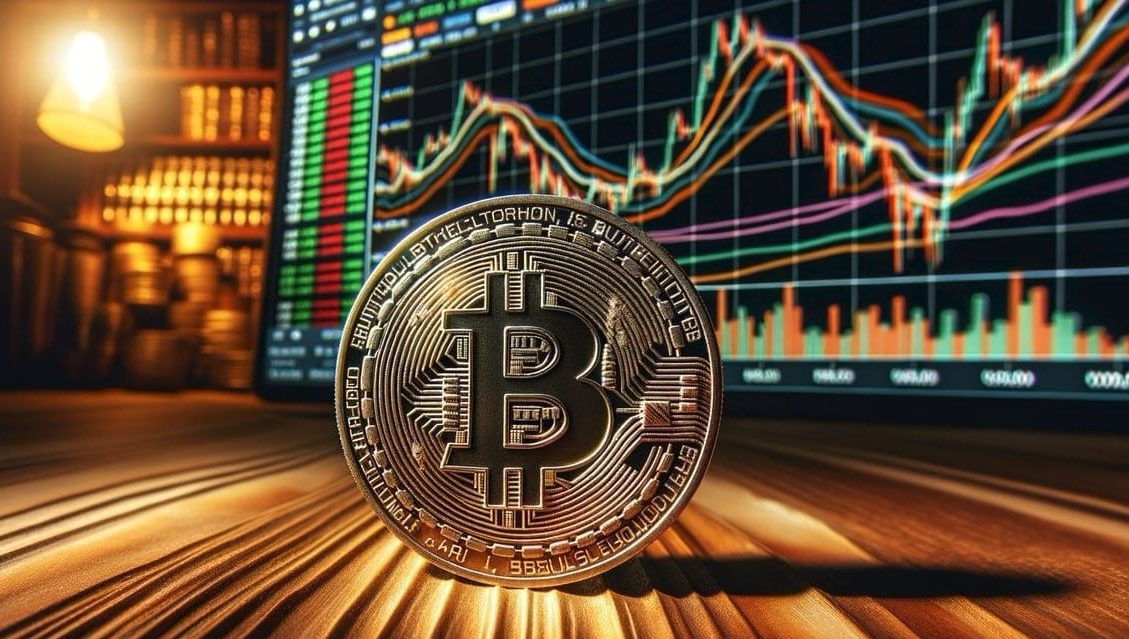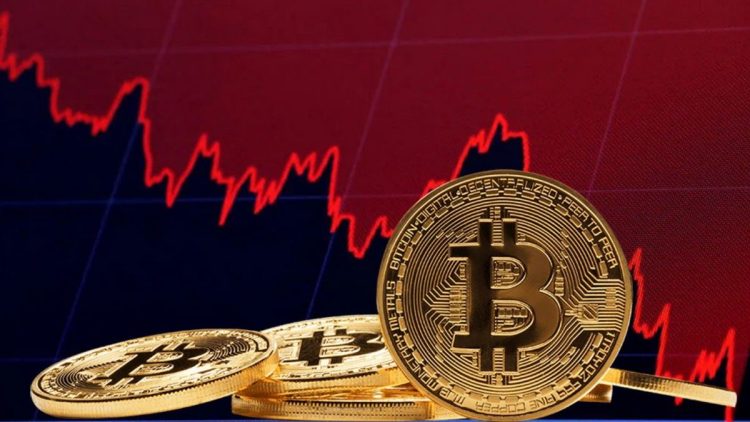Introduction
The world of cryptocurrencies has seen extraordinary highs and painful lows since the inception of Bitcoin in 2009. In recent years, the market for digital assets has grown exponentially, attracting both seasoned investors and new entrants who were drawn by the promise of high returns. However, as cryptocurrencies like Bitcoin, Ethereum, and numerous altcoins surged to new all-time highs, the market has also experienced dramatic crashes that have left many wondering: is the current downturn just another phase of the volatile cryptocurrency cycle, or does it signal the bursting of a long-term bubble?
This article will analyze the recent crash in the cryptocurrency market, explore the underlying factors that contributed to it, and discuss whether the collapse of digital assets is a signal of an impending burst of the crypto bubble. We will delve into the nature of speculative bubbles, the characteristics of the crypto market, and the potential for future growth or decline in this highly volatile sector.
1. The Rise and Fall of Cryptocurrency Markets
1.1 The Rapid Growth of Digital Assets
Cryptocurrencies have evolved from niche, tech-savvy investments into mainstream financial instruments. Bitcoin, the first and most prominent cryptocurrency, was initially seen as a form of decentralized money that could bypass traditional banking systems. Over time, the rise of other digital assets—such as Ethereum, Solana, and Binance Coin—has expanded the scope of the cryptocurrency ecosystem, creating an entire industry based on decentralized finance (DeFi), NFTs (Non-Fungible Tokens), and blockchain-based technologies.
The tremendous growth in market capitalization—from Bitcoin’s early days worth a few cents to its brief touch of $60,000+ per coin in 2021—attracted institutional investors, tech companies, and even governments, further fueling optimism around the future potential of digital assets. Additionally, blockchain technology has been recognized as having transformative potential beyond finance, with applications in supply chain, voting systems, healthcare, and more.
1.2 The Recent Market Crash
However, as quickly as the market surged, it has also witnessed significant drops in value. The crypto market crash in 2022, followed by another sharp downturn in 2023, sent shockwaves through the entire ecosystem. Bitcoin, which had touched nearly $70,000 in late 2021, fell below $20,000 by mid-2023. Other altcoins, like Ethereum, Solana, and Cardano, experienced similar declines. Investors who had bought into the hype were left holding assets that had lost 50%, 70%, or even 90% of their value.
The volatility of the crypto market has many parallels to historical financial bubbles, such as the Dot-Com Bubble of the late 1990s or the housing bubble of the mid-2000s. But unlike traditional financial markets, where regulatory frameworks and institutional safeguards often provide some level of protection, the cryptocurrency market operates with relatively little oversight and is driven by speculative trading.
2. Understanding the Nature of a Bubble
2.1 What is a Financial Bubble?
A financial bubble occurs when the price of an asset—whether it be stocks, real estate, or digital currencies—becomes inflated beyond its intrinsic value due to speculative buying. In the case of cryptocurrencies, the market’s volatility is often driven by hype, media attention, and a fear of missing out (FOMO). This creates a situation where prices rise rapidly, fueled by an increasing number of new investors who believe they can cash in on the rise.
However, bubbles inevitably burst when the underlying value of the asset does not support the inflated prices. In the case of cryptocurrencies, the bubble is often driven by a combination of factors, including:
- Speculation: Investors buying based on the expectation of future price increases without regard for the underlying fundamentals.
- Fear of Missing Out (FOMO): The psychological pressure to buy as prices rise, fearing that if they don’t, they will miss out on potential gains.
- Regulatory uncertainty: Governments around the world are still grappling with how to regulate cryptocurrencies, which creates a sense of uncertainty and market manipulation risk.
2.2 Are Cryptocurrencies Different from Other Bubbles?
While many experts argue that the cryptocurrency market exhibits all the classic traits of a bubble, there are also aspects that differentiate it from other speculative bubbles. Unlike stocks or real estate, cryptocurrencies are not tied to physical assets or tangible revenue streams. Instead, they are valued based on factors such as adoption, network effects, and technological potential.
Furthermore, the blockchain technology behind cryptocurrencies offers undeniable potential for revolutionizing various industries, from financial services to supply chain management, which may offer a level of long-term value that speculative stocks or other bubbles lack. In this sense, the long-term potential of digital assets might not be entirely speculative.
3. Factors Contributing to the Recent Crypto Market Downturn
3.1 Regulatory Pressures
One of the biggest factors influencing the recent crash has been increased regulatory scrutiny. Governments around the world, particularly in the United States, China, and the European Union, have begun to regulate or outright ban certain cryptocurrency activities. For instance, China’s crackdown on Bitcoin mining and cryptocurrency trading, along with the U.S. Securities and Exchange Commission’s (SEC) increased enforcement actions against unregistered crypto projects, has created a sense of uncertainty in the market.
The lack of clear regulations has led to concerns about the future of the crypto market, especially for institutional investors who are reluctant to engage with a sector that remains largely unregulated. The potential for stricter rules or outright bans in major markets has caused some investors to pull out, leading to further price declines.
3.2 Market Sentiment and Speculative Nature
Much of the recent crash can also be attributed to shifting market sentiment. In 2021, digital assets were seen as a hedge against inflation and an alternative to traditional financial systems. However, as inflation fears started to subside and stock markets saw strong performance, many investors began to view crypto as a risky, speculative asset.
The volatility of the crypto market makes it particularly vulnerable to sentiment shifts. When institutional investors or high-profile individuals like Elon Musk make statements that change market perceptions, it can lead to dramatic fluctuations in prices.
3.3 Macroeconomic Factors: Inflation and Interest Rates
Global economic conditions, such as rising inflation and interest rates, have also played a role in the recent crypto downturn. As central banks around the world raise interest rates to combat inflation, riskier assets like cryptocurrencies lose their appeal. With higher borrowing costs, investors tend to shift their focus toward safer assets, such as bonds or stocks, which offer more predictable returns.
For many, cryptocurrencies are seen as a speculative investment, and in times of economic uncertainty, investors tend to pull back from riskier assets. This shift in investor behavior contributed to the rapid sell-off in digital assets during the crash.

4. Is the Crypto Market in a Long-Term Bubble?
4.1 The Case for a Bubble Burst
From a historical perspective, the cryptocurrency market shares many similarities with previous financial bubbles. The meteoric rise in prices, driven largely by speculative trading, coupled with a lack of clear valuation metrics, suggests that we may indeed be witnessing the burst of a bubble.
If investor behavior remains driven by speculation rather than solid technological or economic fundamentals, the market may continue to be volatile, with periodic crashes followed by periods of rapid price appreciation. Without the establishment of clear regulatory frameworks and widespread institutional adoption, cryptocurrencies could struggle to maintain their value in the long term.
4.2 The Case for Long-Term Value
On the other hand, the underlying blockchain technology powering cryptocurrencies offers immense potential. While the market for digital assets may experience volatility, the core technology has the potential to transform sectors like finance, supply chain, and digital identity. If this technology can mature and find widespread real-world application, the value of cryptocurrencies may stabilize, and long-term growth could be supported by the fundamental utility they offer.
Many proponents of cryptocurrencies believe that, much like the early days of the internet, the current volatility is simply a growing pain as the technology reaches maturity. As regulatory clarity improves and institutional adoption increases, the market could experience a more sustained period of growth.
Conclusion
The recent crash in the cryptocurrency market raises important questions about the future of digital assets. Is the current downturn just a temporary setback, or does it signal the end of the crypto bubble? While the market’s volatility and speculative nature certainly resemble the patterns of previous financial bubbles, there are unique factors at play in the crypto space—most notably the underlying technology—that suggest the market could evolve into a more stable asset class in the future.
Ultimately, whether cryptocurrencies are in a bubble or experiencing a market correction depends on one’s perspective. If digital assets continue to offer real-world value and solve problems in areas like finance and blockchain infrastructure, they may recover from this downturn and continue to grow. However, if speculative trading and regulatory uncertainty continue to dominate, the crypto market may face continued volatility or even a prolonged decline.
For now, investors need to proceed with caution, understanding both the potential and the risks that come with this still-maturing asset class.

















































